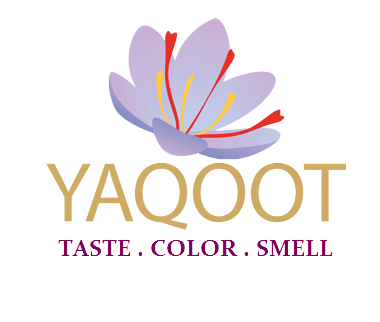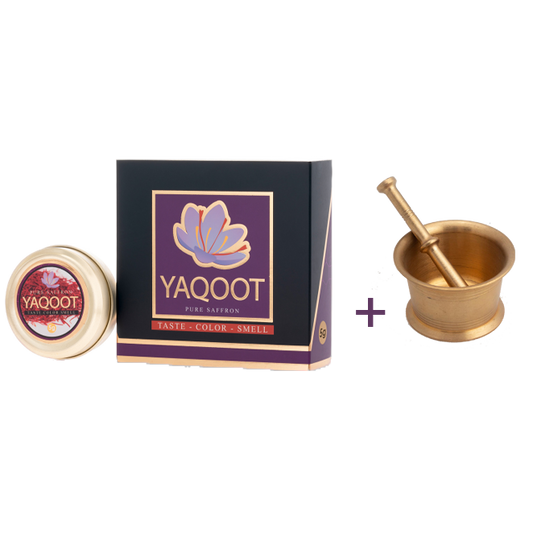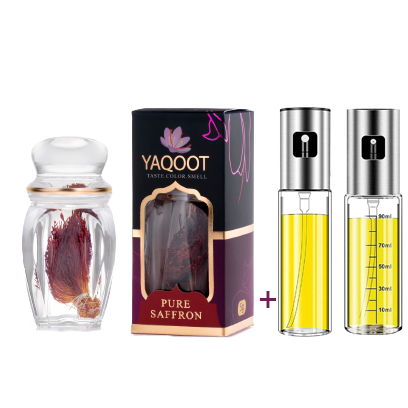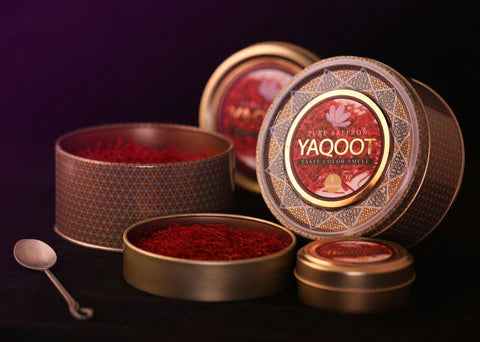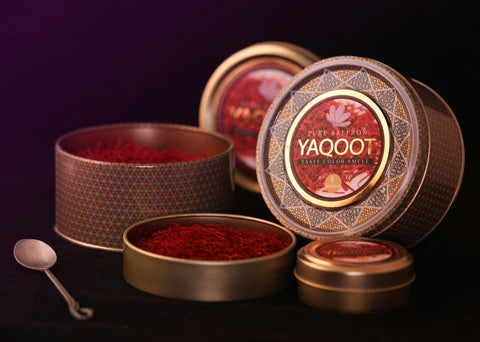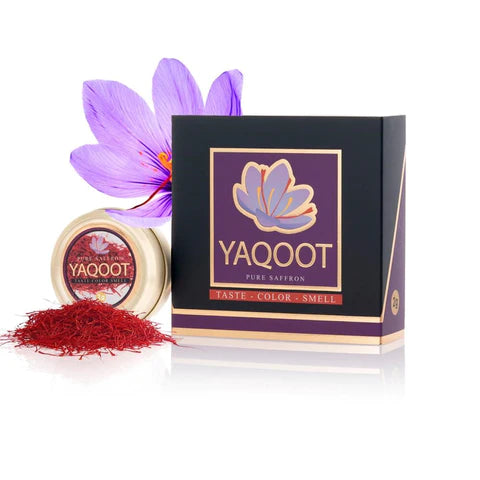Did you know that during certain historical periods, saffron’s worth by weight was more than gold? No surprise why this spice is popularly called “red gold!”
Saffron reminds you of something exotic, something that is hard to get. It is because this is one of the most expensive and rarest foods on the planet. It's costlier than caviar, real Japanese wasabi, or premium vanilla beans. It takes almost 200 flowers to give you a gram of this spice.
Things to know when buying saffron for the first time:
Saffron is a purple flower whose stigma alone is used for that distinctive yellow color that we associate with this spice. The sweet herb-like aroma and bitter taste can be attributed to the stigma or the part which generates the pollen.
- Every saffron flower has only 3 stigmata, and once these are taken from the plant, they are dried for preserving the flavor and color. This tells you why you need almost 75,000 flowers to produce only a pound of this spice. And that’s also why this spice is so costly. Not only will you get a very small amount of saffron from each plant but the extraction has to be performed manually.
- Saffron can be of different types; so, its quality depends largely on the part its extracted from. The ISO (International Organization of Standardization) grades saffron quality depending on its flavor, colors, and other factors. The Negin variety is produced by mixing three threads of stigma to produce a cluster. It is a delicate and intricate manual process making it the costliest variety. Sargol is produced using the dark red tips of the stigma. This is the highest grade of saffron that can be found in the market. Pushal is produced from the dark red tips and the orange portion of the stigma. It isn’t as pure as the Sargol but of good quality and preferred by consumers. Khooshe is a low-grade saffron that is made using red stigmata.
How much saffron is safe on a daily basis?

Saffron consumption is safe and there are generally no side effects. When used in cooking meals, it hardly triggers any adverse reaction. If you use saffron as a diet supplement, you can consume up to 1.5 grams on a daily basis. The truth is only 30 milligrams is enough to offer you health benefits. Avoid taking more than 5 grams a day as this can lead to toxicity, especially if you are pregnant.
How to know which is the best saffron to buy:
If you plan to buy saffron online, it’s important to know how to distinguish between real and fake varieties.
- Check the shape and color: It's easy to spot high-quality saffron by looking at its appearance. The genuine varieties will be available in deep red shades and have hardly any yellow in between. At times, scammers will try and make duplicates of this variety by dyeing stigmas in red color and then marketing these as the Negin variety. The fake versions are usually heavier and the dye makes them sticky. The easiest way to detect the scam is to check if the saffron strings stick to each other or not.
- Taste and smell the saffron: Unlike what people say, saffron will never be sweet to taste. The best saffron has an earthier taste and is usually bitter with a slightly sweet tinge to it. The fake saffron tastes much sweeter since the sellers add additives and sugar to the saffron threads. Likewise, genuine saffron will have a honey fragrance because of the presence of phytochemicals in it.
- Hot milk taste: If you place a few saffron threads in warm milk or cold water and let it sit for a while, the color slowly turns yellow if the saffron is real. Artificial saffron when put into cold water breaks immediately and colors the water.
- Baking soda test: In this, you can place a few treads in a cup of baking soda and add water to this mix. When the mixture becomes yellow, it means the saffron is genuine; if it doesn’t, it’s clear the saffron is fake.
How to buy saffron online:
- Price: Saffron is costly but the prices depend on the type of cut. When you find saffron being sold at incredibly low rates compared to international rates, you should test it. Chances are high that the saffron isn’t genuine.
- Packaging: It’s a well-known fact now that scammers will dye the saffron stigmas and pass these off as real saffron. This is why you need to examine the packages closely. When threads are dry, it’s real saffron, but if they appear to stick to one another, it suggests that dye has been used. Moreover, you need to check for the thread size; these should ideally be similar and uniform when the saffron is genuine.
- Safflower: When seen from a distance, this looks very much like saffron but this plant is different and its properties are also distinct. You need to be aware of this plant to be able to buy saffron online in USA.
- Check the shape and color: Saffron threads should have a trumpet-like shape; if you find some threads looking different, you are probably being scammed. Examine the color because genuine saffron will have a bright red shade, with some yellow and orange tips. When you find the color to be a tad dull, it means that the saffron is possibly dated. If however, it looks too vibrant, it probably means an artificial dye has been used.
- Avoid powders: When you use a spice that has been dried and converted into a powdered form, its effectiveness diminishes. Powdered saffron may contain fillers that are hard to spot. This will reduce the vitamin concentration in the spice.
- Reputed supplier: When you buy saffron online, make sure to research the supplier beforehand. The supplier you choose should have a flawless reputation and a clientele of satisfied customers that offer it high ratings and positive reviews.
Knowing these guidelines about using saffron can help you get the most out of this exotic spice. Make sure you research suppliers before you purchase saffron online; you don’t want to get cheated after spending a fortune on it!
